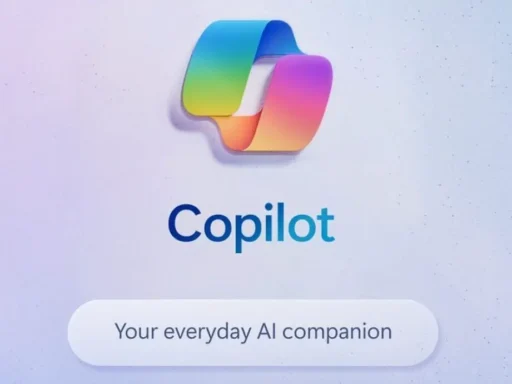SandboxAQ Raises $150 Million — Here’s What That Means for the Future of AI
The chase for smarter AI just got more crowded. And a lot richer.
SandboxAQ, a Google spinout blending artificial intelligence with quantum computing, just pulled in a jaw-dropping $150 million in Series A funding. This isn’t coming from fringe investors trying to make a name. No—this is heavy artillery. Google backed it. Nvidia backed it. Former Alphabet executive Eric Schmidt threw his weight behind it too.
If you’ve never heard of SandboxAQ until now, that’s exactly why this matters. The AI startup space isn’t just growing—it’s leveling up hard. We’re watching deep-pocketed giants place bets not just on better algorithms but on the companies they believe will define the future of computing.
This isn’t Me-Too-AI SaaS money. This is “we want to own the edge where math breaks the world open” money. And SandboxAQ is straddling that edge with both feet planted in quantum science and machine learning.
While headlines obsess over ChatGPT’s next update, real tectonic shifts are happening elsewhere—in labs, in encrypted communication, in quantum simulations. This funding announcement just dropped a pin on the next big gameboard.
SandboxAQ’s Breakthrough Funding Round
Here’s who showed up with their checkbooks:
- Nvidia: Arguably the backbone behind today’s generative AI revolution. Betting on SandboxAQ means they’re looking past today’s hype cycle.
- Google: Still closely linked through parent Alphabet. Reinforcing its early belief that quantum + AI isn’t theoretical anymore.
- Eric Schmidt: Alphabet’s ex-CEO didn’t just mentor this company—he put money down.
The punchline? Big Tech isn’t just building AI anymore. They’re funding moonshots that threaten to outgrow them.
What makes this so different from your average funding round?
Three things:
– It isn’t chasing generative AI headlines.
– It’s about foundational tech, not flashing user-facing demos.
– Quantum security, simulation, and compute workloads are the bones of tomorrow’s tech stack.
The $150 million puts SandboxAQ in the rare category of AI players who aren’t trying to imitate OpenAI or scale another LLM. They’re shaping an entirely new market.
Implications For The AI Industry
This isn’t a round of funding—it’s a signal flare.
Nvidia, the $2 trillion silicon lifeline of every AI lab on the planet, just diversified its bets into quantum. Not just bets—it’s swinging capital, influence, and hardware pipelines to gear this thing into motion.
Let’s be real. Nvidia didn’t fund most ChatGPT competitors. That wasn’t their style. So why SandboxAQ? Because things like quantum-resistant encryption and molecular simulation aren’t solved with another chatbot layer.
And Google? After spinning off SandboxAQ from Alphabet, they’re still in. Show me another major tech player still funding their spinouts two years later. The message is simple: Google isn’t done with quantum.
So what does this tell us about where AI is going?
| Tech Giant | Current AI Focus | What SandboxAQ Adds |
|---|---|---|
| Nvidia | Training LLMs, chip design | Quantum simulation, encrypted AI compute |
| Search AI, robotics, DeepMind | Post-quantum cryptography, medical modeling |
This plays into a growing pattern. Big firms are subcontracting innovation to leaner, riskier startups. They fund them, test new layers of compute, then absorb the breakthroughs through partnership or acquisition.
And here’s the twist—SandboxAQ is positioned right at the junction of two megatrends: the rise of applied AI and the commercialization of quantum computing.
No other startup sits that squarely in both camps.
The real implications? Expect these three shifts in the AI landscape:
– Quantum-proof AI tools used in national defense and security systems.
– Simulation-heavy AI models in pharma and biotech development.
– Hybrid infrastructure built from AI + quantum accelerators instead of GPUs alone.
This funding doesn’t just reflect where money flows—it reflects where strategic risk tolerance lives. And right now, the people who built trillion-dollar empires are betting their chips on the AI-quantum crossover.
AI Market Growth And Competitive Landscape
No question—AI is booming. But most people are looking in the wrong direction.
Everyone’s tracking OpenAI vs. Google DeepMind. GPT-5 memes. Text-to-video hype. But none of that explains why SandboxAQ just got $150 million to build behind the curtain.
This is where it gets interesting.
The global AI market is expected to surpass trillions in value by 2030—but what jobs, tools, and industries does that actually impact? The answer is: the ones that can’t afford to get it wrong. Healthcare models. Military-grade cryptography. Finance systems that survive black swan events.
SandboxAQ brings differentiated value in all three.
While most AI startups chase usability, they’re chasing resilience, security, and scale.
Think about competition like this:
– Startups build fast, seek product-market fit, iterate on front-end tools.
– Big-tech AI labs build large strategic models (Gemini, GPT) and aim to dominate cloud infrastructure.
– SandboxAQ builds for science, defense, and institutions who don’t care about beta invites—they want finished solutions that won’t collapse under pressure.
So how does the funding wave shape that?
Every time a startup like SandboxAQ gets this level of backing, it widens the lane for moonshot AI categories. Investors start hunting for adjacent ideas—like neural encryption, post-quantum blockchain, quantum-enhanced diagnostics.
Broader funding trends show a split:
– Early-stage hype around AI products is cooling slightly.
– Deep-tech AI–quantum hybrid ventures? On the upswing hard.
The real winners in the next wave of AI won’t be who gets the most users soonest.
It’ll be who owns the tools that other AI needs to function—securely, ethically, and at quantum scale.
And SandboxAQ may have just taken the first real lead.
SandboxAQ’s Technological Focus Areas
Most people hear “AI startup funding” and immediately picture another chatbot or personalized shopping tool. But SandboxAQ isn’t playing that game. Spun out of Alphabet in 2022, this stealth-mode darling is quietly merging machine learning with quantum physics to attack problems that go far beyond click-through rates. Think national security, cancer research, and the kind of encryption you’d need in a post-quantum world.
At the core of SandboxAQ’s strategy lies a blend of artificial intelligence and advanced quantum tech. But they’re not just philosophizing in lab coats – they’re releasing practical solutions. Their AI-driven algorithms simulate molecular interactions, helping pharmaceutical researchers model how cancer drugs bind to protein targets, all without stepping into a lab. That’s not optimization – that’s years shaved off R&D timelines.
In healthcare, they’re working with partners to accelerate drug discovery by using deep learning to predict molecular behavior. What once required immense chemical trials can now happen virtually – in seconds. Finance teams, on the other hand, are leaning on SandboxAQ’s quantum-safe encryption tools to secure transactions that could one day be cracked wide open by quantum computers. Their slogan might as well be: build defenses now, before the attacker arrives.
Their work doesn’t stop at theory. U.S. federal agencies, banks, and hospital networks are already testing these tools. What they all have in common? A need to guard sensitive data – whether patient records or financial transfers – against next-generation threats.
The fusion of AI and quantum science helps SandboxAQ tackle problems with multi-layered unknowns – the kind where classical computers hit a wall. They apply machine learning to sift through wavefunction data. They build predictive models not just for what’s happening now, but for what will happen when quantum disruption finally arrives. In a world racing toward quantum supremacy, they’re not worrying about if. They’re preparing for when.
Quantum machine learning still sounds like science fiction to some. But at SandboxAQ, it’s day-to-day work. Their existence proves that the line between academic theory and real-world applications isn’t just blurred – it’s being actively erased.
The Future of AI Applications and Tools
What happens when AI evolves from a helpful assistant into an industry disruptor? That question keeps CIOs, hospital directors, and defense analysts awake at night – and it’s also the reason investors are pouring capital into companies like SandboxAQ. The gap between experimental AI tools and mission-critical operations is shrinking, fast.
Sectors like healthcare and finance are transitioning from legacy systems to AI-augmented platforms where prediction and protection happen in milliseconds. Deep neural networks don’t just read reports anymore – they understand them, flag risks, and recommend action. In emergency rooms, they’re helping identify cancerous anomalies faster than human review. On Wall Street, they’re scanning financial anomalies before fraud strikes.
SandboxAQ isn’t following trends – it’s setting them. While others chase synthetic avatars and generative art, SandboxAQ is helping build digital immune systems. Its AI applications are designed for scale, with cybersecurity solutions capable of protecting everything from edge devices to cloud wallets. In the roadmaps of future AI applications, their tech sits squarely at the junction of data protection and scientific acceleration.
Forget novelty – this isn’t AI for fun. This is AI straightening the spine of national infrastructure. That includes real-time threat detection and stronger encryption protocols built for the quantum decade ahead.
- Drug discovery tools: Speeding up oncology treatment timelines by up to 70% in simulations
- Classical-to-quantum transition models: Helping businesses future-proof data before Q-day hits
- Cross-industry encryption APIs: Plug-and-play security for hospitals and financial institutions
If sandbox-level experimentation defined the last wave of AI tools, what’s next is deeply strategic deployment. And at the tip of that arrow is a company that treats AI not as a buzzword, but as a wartime necessity – deployed in service of health, safety, and systemic trust.
AI Ecosystem Synergy: Collaboration vs. Competition
The AI startup scene isn’t just a race – it’s an arms deal. Nvidia and Google aren’t just writing checks out of curiosity. Their investments in startups like SandboxAQ reflect a broader strategy: control the pipelines of next-gen intelligence while hedging against disruption.
So are they collaborators or rivals? The answer isn’t binary. Google, as SandboxAQ’s former parent, retains a stake in its post-spinout success. Nvidia, on the other hand, is injecting capital faster than its chips are installed in ML clusters. These powerhouses see something most analysts miss: a future where small, agile AI startups redefine what’s possible – and owning a piece is cheaper now than playing catch-up later.
Partnerships between these AI giants and startups aren’t just about money. They unlock hardware access, supercompute infrastructure, and credibility among risk-averse clients. With Nvidia’s ecosystem providing GPU firepower, SandboxAQ’s algorithms get to breathe – and scale harder and faster.
Still, collaboration doesn’t erase tension. When the same companies funding breakthroughs also compete in nearly identical verticals, ethical boundaries get blurry. Can a startup fighting for quantum-secure encryption trust its investor, who also builds cloud services with legacy protocols? These are murky waters, and the lifeboats come with NDAs.
There are real challenges here:
- Data ownership disputes: Who controls training datasets when multiple partners contribute insights?
- Ethics under pressure: As funding surges, pressure mounts to deliver speed over safety. That’s not neutral – that’s dangerous.
- Corporate influence creep: When VCs with deep pockets shadow product roadmaps, transparency often becomes performative.
Startups like SandboxAQ must walk the tightrope. They need giants’ money and muscle – but not at the cost of independence. Maintaining ethical AI development in high-pressure, high-funding environments isn’t just noble—it’s essential. And it demands public accountability, not just white paper pledges.
The AI funding ecosystem isn’t black or white. It’s an uneasy handshake of innovation and interest. But when done right, that handshake creates tools that could protect millions. When done wrong, it funds toys that backfire at scale.
The Role of AI Research in Driving Innovation
Let’s start with a tough question—how do tiny AI startups like SandboxAQ go toe-to-toe with tech giants who eat billion-dollar budgets for breakfast? It’s not by outspending them. It’s by out-researching them.
SandboxAQ’s biggest play isn’t hype—it’s computation meets quantum security. They’re fusing traditional AI algorithms with emerging quantum technologies. Translation: smarter, faster, and more secure. Through their research, they’re pumping innovations that filter downstream into real-world applications—like stress-testing cybersecurity models or optimizing logistics for medical supply chains. And while others are talking about AGI, SandboxAQ is pushing real innovation quietly through precise, calculated research.
But here’s the catch: high-impact research isn’t all sunshine. AI research pulls crazy amounts of energy. You train a model? That’s a carbon trail. Not to mention the firestorm around data ethics. The deeper researchers go, the more computational muscle they need, and more data they scrape—raising the risk of unchecked bias or breaches.
That’s where SandboxAQ’s dual edge stands out. They’re not just building algorithms. They’re embedding privacy-first design and committing serious hours to ethical compliance. Yeah, it’s not sexy, but it’s what separates scalable AI startups from the next big lawsuit waiting to happen.
On the global radar? Startups like this are behind seismic shifts—like accelerating drug simulations in pharma using AI+quantum blends, reshaping how encrypted data gets cracked (or not), and even influencing NATO-level security discussions. These aren’t side projects. They’re pivot points for how nations think about intelligence, safety, and even war.
The Broader Impact of AI Startups
Let’s get straight to it—AI startup funding isn’t just about building the “next big thing.” It’s shaping the actual infrastructure that tomorrow runs on.
Startups drive innovation because they move fast, break stuff (ideally just code, not people), and rebuild it better. They create jobs, develop edge computing networks, and bring machine learning tools to sectors that used to run exclusively on paper and manual labor.
But it’s not all fireworks and “we’re hiring.” There’s a buzzkill side too. People are questioning whether AI systems are snooping on users, or embedding human biases into tools that decide stuff like hiring or loans. Also, let’s not forget environmental impact—many AI models gulp electricity like it’s Gatorade, especially when you’re cranking out GPT-level outputs day and night.
This isn’t about scaring anyone. It’s about holding the mirror up. SandboxAQ, for example, isn’t ducking these questions. They’re tackling data privacy and regulatory headaches head-on by designing models to be explainable and privacy-hardened. And that’s rare.
Here’s where this all gets real: AI startups are already reshaping global industries—like finance using AI for fraud analysis, logistics optimizing freight routes in real time, and even agriculture using machine learning to forecast crop diseases. It’s not future talk. It’s now talk. And a lot of it is coming out of startups funded not by chance, but by vision-aligned capital bets.
The Way Forward: Trends and Predictions for AI’s Future
Nobody’s crystal ball works in AI. But if you follow where the research, dollars, and hires are going, patterns form fast.
Generative AI is clearly leading the pack. But what matters now is how models are built and governed. Expect a major surge in demand for ethical AI frameworks, not as compliance checkboxes—but built-in rules of play. Think developer kits that start with “how do we not screw this up?” baked right into their structure.
So what does SandboxAQ’s funding tell us? First, investors aren’t just throwing cash at “anything AI.” They’re backing precision. Infrastructure. Security. Startups that aren’t promising to build Skynet, but to solve hard, boring problems—like medical logistics and post-quantum cryptography—with ruthless focus. That shift matters for founders looking to build.
Here’s what we’re betting on for the future:
- AI + Quantum is no longer niche—it’s entering national defense, healthcare, and science with force.
- Open-sourcing models will face a backlash after data breaches and misuse cases hit headlines.
- “Responsible AI” will become a regulated framework, not just feel-good copy on your pitch deck.
At the rate things are moving, “disruption” is an understatement. AI startups will demolish legacy workflows, kill off entire middle layers of outdated tech, and enable new sectors that don’t even exist yet (bio-AI? quantum-secure banking?).
You don’t win by copying the OpenAIs. You win by finding the inefficiencies they overlook and building under the radar.







